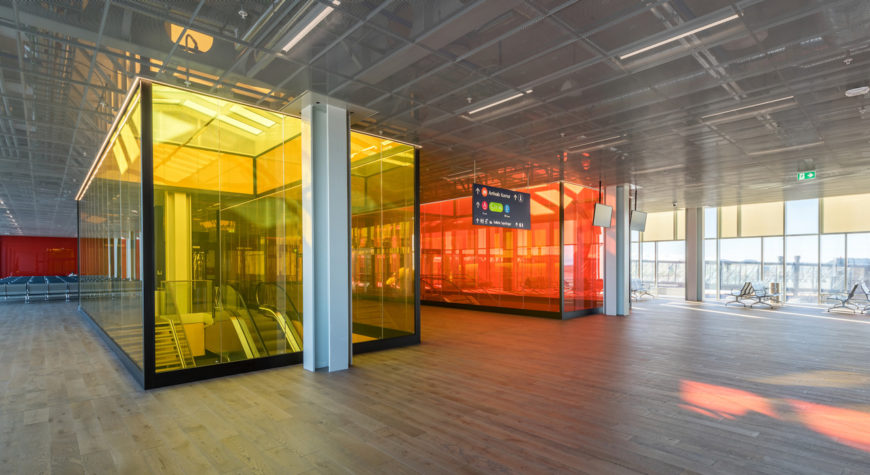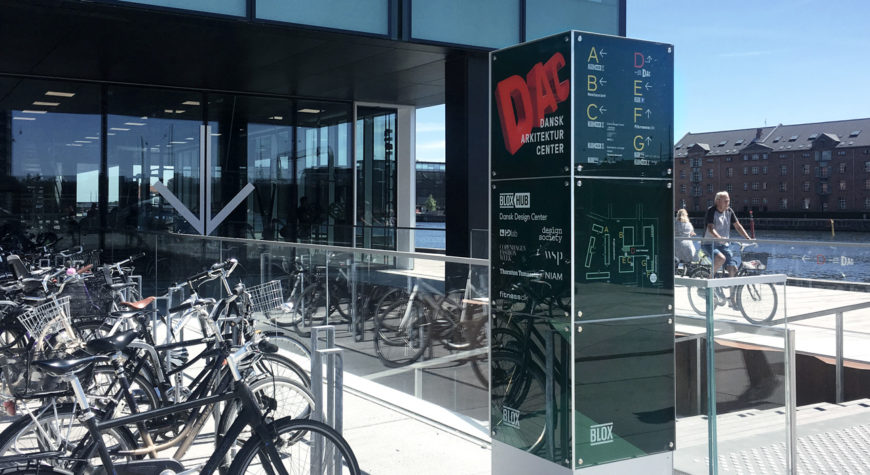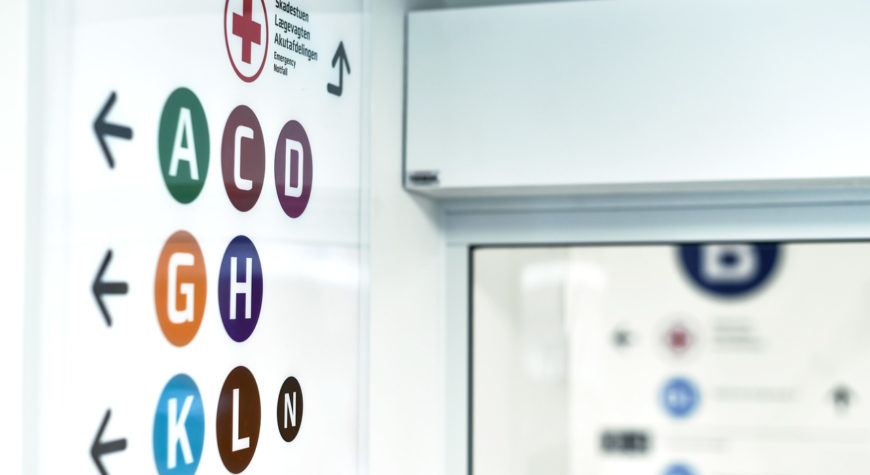Triagonal has designed wayfinding strategies and solutions for a large number of airports and stations around the world. We work closely with architects, engineers and other specialists to create innovative and high-quality wayfinding solutions for transportation hubs adapted to each unique space.
Wayfinding for transportation hubs
Want to know more?

How to optimize operational performance with wayfinding
When designing wayfinding systems for some of the world’s largest transportation hubs, understanding the logistics and infrastructure of the space is key to an optimal operational performance. This understanding allows us to plan and optimise user flows to support the functionality of the spaces and to improve space utilisation.
While operational performance is paramount to keeping the wheels running smoothly, good user experiences are important to a successful business. Our focus is always on how we can improve the passenger experience through the simplicity, coherence and consistency of the wayfinding systems. These are all factors that contribute to a stress-free and relaxed journey, giving the passengers extra time to shop, grab a coffee or just relax before their journey.
Understanding passenger journeys
A profound understanding of where the passenger journey starts and ends from an informational point of view is crucial. Triagonal regards the information journey in its broadest possible sense, starting well before a traveller leaves home and ending well after the final destination is reached.
The journey is neither just from A to B within e.g. the airport, nor from A to B via C or D (commercial offers etc.). but from X – your initial point of departure, to Y – your final point of arrival – and even beyond. By including and considering the entire user journey and travel experience, we make sure that the passenger will be well prepared and require minimum assistance.
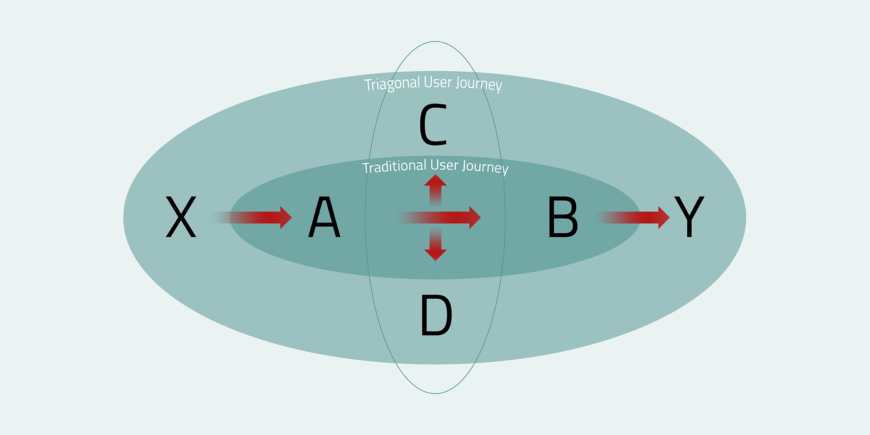
While we are aware that an airport or carrier does not control all the different steps of this journey, the broad perspective allows us to fully understand user needs and behaviour.
Digitalising wayfinding information
This broad perception of the passenger journey also inspires and guides our approach to digitalisation of wayfinding information. Different types of information about different steps in the user journey can be digitalised using various solutions such as on-site dynamic signage and kiosks or personal devices and platforms that are usable throughout the journey.
The different potentials for digitalisation will be explored for each individual project to support the function of the space and the ambition/requirements of the client. All spaces are unique and have specific wayfinding challenges to address.
Go to Services to learn more about the services we can include in your project.
Wayfinding for public transportation hubs
In contrast to airports, where people have to show up in advance, people like to spend as little time as possible at railway stations, bus stops, etc. In these locations people are constantly on the move and in transition, which requires clear and concise communication of the wayfinding information – it must be easy to interpret while in a hurry.
The main challenge in transportation hubs is that people are moving at a high pace and have a destination to reach before a certain time. This means that any information you want to convey needs to be simple, short and sharp. Any excessive information will be confusing as the environment may already be visually saturated with other types of information.
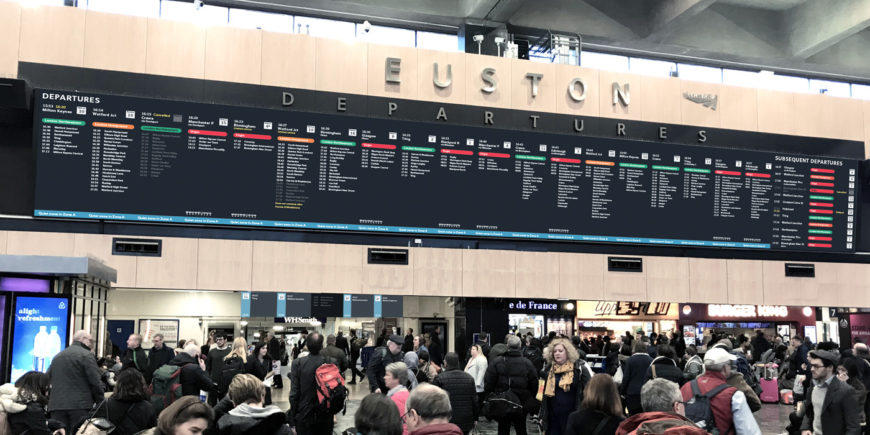
Using digital wayfinding signage is often relevant at such locations as it allows for the adaptability and pace of changes in information. Drawing on the skills of our industrial designers Triagonal is capable of creating a visual design that blends with and supplements the architecture, and yet, is distinctive and with a trustworthy appeal that makes the passengers rely on the information immediately.
Airport wayfinding
Triagonal’s airport wayfinding design facilitates the constant flows of people who are coming and going – arriving, departing and transferring.
In airports all departing passengers are led through the same sequential process of: check-in – baggage drop – security – shopping/dining – gates. A similar well-defined process takes place for the arriving and transferring passengers.
Triagonal’s bespoke airport signage design makes these processes flow as smoothly as possible to support the operational performance. Furthermore, we always coordinate our airport wayfinding signage with other relevant information types e.g. commercial information. To learn more about our approach to customisation to commercial potentials, read below.
Customisation to commercial potentials and brand value
An important success factor in transportation hub wayfinding is to embrace commercial information instead of trying to avoid or disregard it. We have a long-standing working relationship with media specialist Compass Intl. Media.
By coordinating Wayfinding, Architecture, Retail and Media (the WARM approach) we aim to avoid visual noise, signage clutter and the obstruction of important passenger information. Together we have completed a number of successful projects ensuring a coordinated approach to all visual information.
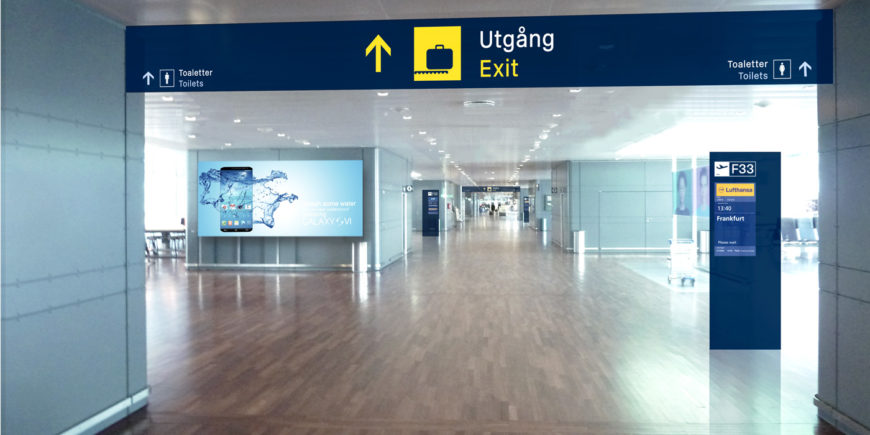
Examples of this joint approach can be seen at:
- Muscat International Airport
- Salalah Airport
- Keflavik Airport
- Queen Alia International Airport
- Helsinki Airport
- Stockholm Arlanda Airport
- Athens International Airport
- Dubai International Airport
- Navi Mumbai Airport
At Triagonal, we tailor the wayfinding strategy to every individual project to serve the intentions and requirements of each transportation hub. Hence the importance of an in-depth analysis and assessment of what currently exists, identifying what works and what doesn’t, cannot be under-estimated. The same goes for ensuring that the brand and ethos of each individual venue, operator or carrier will be present throughout the journey.
Great user experiences for all
Finally, while fundamentally guided by the broadest possible understanding of the user experience, we are aware that this is often interpreted as the passenger experience, first and foremost.
However, our concerns for good user experiences encompass a number of other user groups, from permanent and temporary staff, via visiting professionals and suppliers to stakeholders like shop owners and service providers; all crucial components of the value chain needed to support the best possible journey.
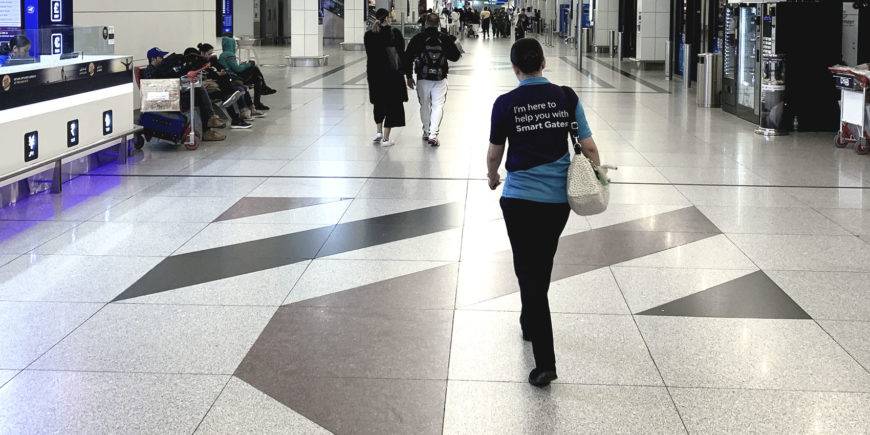
Hence, we also make sure that all our interventions front-of-house work harmoniously with facilities, procedures and protocols back-of-house, to ensure optimal integration across functionalities and stakeholder responsibilities, as in one, well lubricated and effectively tuned piece of machinery.
Do you want to know more about what we can do for you and your organisation? Get in contact here.

